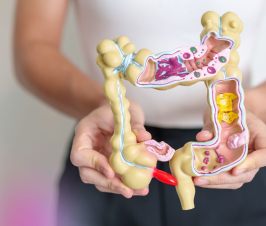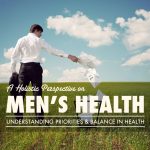Dr. Olisa Mak, ND
 Vitamin D is best known for its role in bone development with low Vitamin D levels causing osteoporosis, decreased bone mineral density and an increased risk of fracture.1 Newer research now suggests that Vitamin D also affects mood and behaviour1, metabolism2, the immune system2, heart1, muscle repair3 and bone development1.
Vitamin D is best known for its role in bone development with low Vitamin D levels causing osteoporosis, decreased bone mineral density and an increased risk of fracture.1 Newer research now suggests that Vitamin D also affects mood and behaviour1, metabolism2, the immune system2, heart1, muscle repair3 and bone development1.
The term Vitamin D refers to a family of active and inactive steroid molecules4. Vitamin D3, an earlier form of the vitamin, is found in food or synthesized in the skin (with UV exposure) but remains inactive until it makes its way to the liver and kidney where it becomes the active form of Vitamin D, 1,25-dihydroxycholecalciferol.4 Once active, Vitamin D uniquely acts as a hormone precursor, binding to Vitamin D receptors throughout the body, to create a wide variety of physiological effects.5
Are You Getting Enough Vitamin D?
Vitamin D is mostly obtained from supplements and diet, fish in larger amounts and in smaller amounts, cheese, egg yolk, mushrooms and beef liver.4 Once in the body, Vitamin D is stored in fat tissue and slowly released into the bloodstream.6 A Vitamin D deficiency can be the result of a poor diet, lack of sunlight, malabsorption due to inflammatory bowel disease, celiac disease, long-term glucocorticoid use as well as gastric surgery.3 Other factors that affect Vitamin D levels are increased age, obesity, pregnancy and lactation.7 Research also shows that individuals with iron deficiency have decreased Vitamin D absorption.4
Low Vitamin D levels are known to cause osteoporosis1 and stress fractures1 and have been associated with cancer2, Diabetes & Metabolic Syndrome5, rheumatoid arthritis3, irritable bowel syndrome8, strokes3, and atherosclerosis5, among others. When choosing a Vitamin D supplement, a vitamin D3 is best. It is the most natural, potent and stable form of vitamin D.5 Vitamin D2 is less bioavailable than vitamin D3 and is more susceptible to variations in the environment, potentially leading to more toxic degradation products.5
Some interesting facts about vitamin D:
- Vitamin D plays a key role in regulating calcium and phosphorus absorption. Being Vitamin D deficient means that you’re only absorbing 10-15% of the calcium in your diet and 50-60% of phosphorus from your diet.1
- An SPF 8 cream reduces the skin’s ability to activate Vitamin D by 95%2 to ensure that your body produces Vitamin D while you’re out in the sun, without being sunburnt, apply sunscreen 15 minutes after being in the sun!
- 41.6% of adults in the USA and 42% of Canadians are Vitamin D deficient9
- When you expose your whole body to sunlight, you produce at least 10 000IU/day of Vitamin D and will show no signs of toxicity4
- Vitamin D regulates expression of approximately 5% of the human genome, or roughly 500 genes.2
According to Statistics Canada, anyone with ≥ 50 nmol/L is sufficient in Vitamin D, anyone < 50 nmol/L is insufficient and anyone < 30 nmol/L is deficient.7 To date, there is no universally accepted standard definition for these categories of Vitamin D deficiency.9
So how much Vitamin D is enough?
In places with adequate amounts of sunlight, Vitamin D supplementation is not needed.4 Everywhere else? Dr. Alan Gaby suggests that 800-1200IU/day of Vitamin D is optimal, reinforcing that “dosages necessary to promote optimal health are often greater than the amounts needed to prevent a frank deficiency”.4 Although studies show that higher dosages of Vitamin D (>2000IU/day) are safe, further research is needed to better understand the long-term effects.4 Possible adverse effects include kidney stones6,11, atherosclerosis4 and arterial calcifications4.
Signs of toxicity include: headache, bone pains, arrhythmias (irregular heart beats), loss of appetite, frequent urination, nervousness, itching, kidney stones, diarrhea, nausea and vomiting and constipation.16
Vitamin D for Athletes
Studies found that Vitamin D-deficient individuals had increased muscle atrophy3 and decreased hand-grip3 and isometric strength3, while Vitamin D supplementation increased sprint times and vertical jump heights.3 Information gathered from the NFL and NBA show that Vitamin D deficiencies are associated with decreased athletic performance.3 Although there’s a lot we do not understand about how Vitamin D affects physical strength and recovery, current findings are promising.
Vitamin D and the Digestive System
While Inflammatory Bowel Diseases (IBD) and other diseases of chronic malabsorption are known to cause a Vitamin D deficiency, Vitamin D also plays a role the development of IBD.8 Vitamin D has been found to affect the development of Crohn’s Disease, a type of IBD, by regulating receptor activity.8 Vitamin D also modulates gut inflammation by altering the activity of specific immune cells and the release of inflammatory mediators.8 In a state of Vitamin D deficiency, the gut is inflamed and the gut’s normal flora is disrupted.8 Vitamin D also affects the digestive tract by regulating the gut’s epithelial barrier against foreign substances.8 In rodent studies where Vitamin D genes are knocked out, proteins necessary for maintaining the integrity of the epithelial barrier decreased.8 These same mice also had increased gut permeability compared to wild-type mice.8
Vitamin D and Heart Health
Vitamin D has been found to have a protective effect on our cardiovascular system. In human studies, low Vitamin D status increased the risk of hypertension5 and atherosclerosis1, likely by regulating blood vessel elasticity and structural integrity. A Vitamin D deficiency has also been found to increase cholesterol deposition on blood vessel walls5, while decreasing markers of good heart health including HDL (often referred to as “good cholesterol) and Apo-B.5 In rodent studies, lower Vitamin D levels were associated with enlarged, fibrous hearts.5
Vitamin D and the Immune System
Before the advent of antibiotics, Vitamin D was used to treat tuberculosis.2 By stimulating white blood cell activity, Vitamin D is known to have strong effects on the immune system. Today, researchers are trying to understand how Vitamin D can be used to treat infections and conditions resulting from an immune system imbalance. Studies have found an association between low levels of vitamin D, and an increased incidence of C. difficile,2 bloodstream infections2 and more severe asthma attacks in children10. A low Vitamin D status is also a risk factor for more severe, longer viral infections including the flu.2
Vitamin D and Cancer
Vitamin D supports the body’s natural defences against cancer by signalling the death of cancerous cells.2 Vitamin D also stops cells from maturing and dividing and stops the development of new blood vessels that would normally nourish and support cancer cells.2 According to a meta-analysis published in 2011, the risk of colon cancer decreases by 15% with an increase in Vitamin D by 10ng/mL 10ngmL-1 on average.2
Conclusion
As the summer comes to an end and we get less Vitamin D from sun exposure, many of us will wonder if we should also start taking our Vitamin D supplements. Vitamin D is an extremely safe supplement that can be taken regularly as a treatment for conditions such IBS and infections and to prevent chronic diseases including depression, cancer, and atherosclerosis.
Vitamin D undeniably benefits people of all ages and needs. As future research expands our understanding of vitamin D, we will have a better understanding of its benefits, its mechanism of action as well as its safety profile, especially at higher dosages and with weight loss.
 Dr. Olisa Mak is a licensed ND with a general family practice in downtown Vancouver. She has a special interest in bringing awareness to the mind-body connection using homeopathy, botanicals and lifestyle counselling.
Dr. Olisa Mak is a licensed ND with a general family practice in downtown Vancouver. She has a special interest in bringing awareness to the mind-body connection using homeopathy, botanicals and lifestyle counselling.
She is driven to educate, inspire and empower those around her. Everyone has the potential to achieve their dreams and goals but are often unable to because of their fears, perceptions and circumstances. Dr. Mak strives to work with her patients to remove barriers, empowering patients to seize opportunities and to make the life they want a reality.
References
- Miller, Jason R. et al. “Association Of Vitamin D With Stress Fractures: A Retrospective Cohort Study”. The Journal of Foot and Ankle Surgery 55.1 (2016): 117-120. Web.
- Matysiak-Luśnia, Katarzyna. “Vitamin D In Critically Ill Patients”. Anestezjologia Intensywna Terapia 48.3 (2016): 201-207. Web.
- Fishman, M. P., S. J. Lombardo, and F. D. Kharrazi. “Vitamin D Deficiency Among Professional Basketball Players”. Orthopaedic Journal of Sports Medicine 4.7 (2016): n. pag. Web.
- Gaby, Alan. Nutritional Medicine. Concord, N.H: Fritz Perlberg Publishing, 2011. Print.
- Aggarwal, Ramesh, Tauseef Akhthar, and SachinKumar Jain. “Coronary Artery Disease And Its Association With Vitamin D Deficiency”. Journal of Mid-life Health 7.2 (2016): 56. Web.
- Jenabi A, Razmjou S, Jomhouri R, Ziaie H. Vitamin D Toxicity; Stored and Released from Adipose Tissue? Arch Iran Med. 2016; 19(8): 597 – 600.
- Janz T and Pearson C. Health at a glance: Vitamin D blood levels of Canadians. Statistics Canada, 2013; catalogue no. 82-624-X.
- Cantorna, M. T. et al. “Vitamin D, Immune Regulation, The Microbiota, And Inflammatory Bowel Disease”. Experimental Biology and Medicine 239.11 (2014): 1524-1530. Web.
- Maroon JC, Mathyssek CM, Bost JW, et al. Vitamin D profile in National Football League players. Am J Sports Med. 2015;43:1241-1245
- Ginter, E. and V. Simko. “Deficiency Of Vitamin D And Vitamin C In The Pathogenesis Of Bronchial Asthma”. Bratislava Medical Journal 117.06 (2016): 305-307. Web.
- Ferraro, Pietro Manuel et al. “Total, Dietary, And Supplemental Vitamin C Intake And Risk Of Incident Kidney Stones”. American Journal of Kidney Diseases 67.3 (2016): 400-407. Web.

















